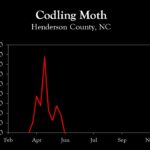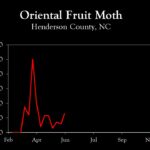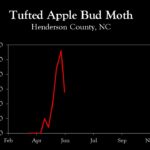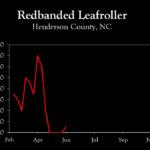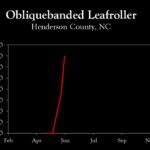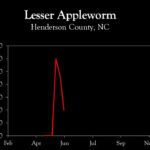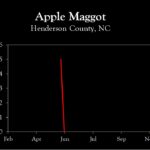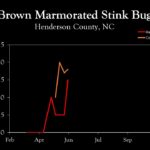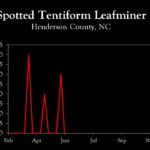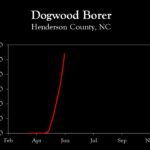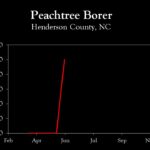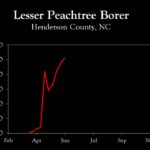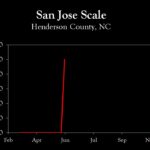WNC Orchard Insect Pest Populations – June 8, 2021
go.ncsu.edu/readext?802388
en Español / em Português
El inglés es el idioma de control de esta página. En la medida en que haya algún conflicto entre la traducción al inglés y la traducción, el inglés prevalece.
Al hacer clic en el enlace de traducción se activa un servicio de traducción gratuito para convertir la página al español. Al igual que con cualquier traducción por Internet, la conversión no es sensible al contexto y puede que no traduzca el texto en su significado original. NC State Extension no garantiza la exactitud del texto traducido. Por favor, tenga en cuenta que algunas aplicaciones y/o servicios pueden no funcionar como se espera cuando se traducen.
Português
Inglês é o idioma de controle desta página. Na medida que haja algum conflito entre o texto original em Inglês e a tradução, o Inglês prevalece.
Ao clicar no link de tradução, um serviço gratuito de tradução será ativado para converter a página para o Português. Como em qualquer tradução pela internet, a conversão não é sensivel ao contexto e pode não ocorrer a tradução para o significado orginal. O serviço de Extensão da Carolina do Norte (NC State Extension) não garante a exatidão do texto traduzido. Por favor, observe que algumas funções ou serviços podem não funcionar como esperado após a tradução.
English
English is the controlling language of this page. To the extent there is any conflict between the English text and the translation, English controls.
Clicking on the translation link activates a free translation service to convert the page to Spanish. As with any Internet translation, the conversion is not context-sensitive and may not translate the text to its original meaning. NC State Extension does not guarantee the accuracy of the translated text. Please note that some applications and/or services may not function as expected when translated.
Collapse ▲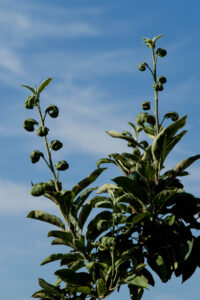 Codling moth degree-day accumulations range from about 630 in Henderson County to approximately 960 DD in Cleveland County. At this stage codling moth remains a potential threat in Henderson County and locations with a similar or higher elevation (≥ 2000 ft), while in lower elevations (Cleveland/Lincoln Co) first generation flight is nearly complete.
Codling moth degree-day accumulations range from about 630 in Henderson County to approximately 960 DD in Cleveland County. At this stage codling moth remains a potential threat in Henderson County and locations with a similar or higher elevation (≥ 2000 ft), while in lower elevations (Cleveland/Lincoln Co) first generation flight is nearly complete.
In locations where tufted apple bud moth is a concern, the window of opportunity for control will be nearing an end in lower elevations, while in orchards above 2000 ft the window will remain open for at least 7 to 10 days.
Second generation oriental fruit moth flight is underway in most regions, but typical of this generation, numbers are very low.
Mid-June is prime time for green apple aphids, potato leafhopper, and European red mite, so monitoring for these pests is important at this time.
Learn more about southeastern apple insect pests at the Apple Insect Management page.
2021 Average Weekly Trap Captures
| HENDERSON COUNTY | |||
| Insects per trap | |||
| May 24 | Jun 1 | Jun 7 | |
| Codling moth | 5.5 | 3.5 | 0.0 |
| Oriental fruit moth | 7.0 | 6.0 | 13.0 |
| Tufted apple bud moth | 22.0 | 28.0 | 14.0 |
| Redbanded leafroller | 0.0 | 0.0 | 1.0 |
| Obliquebanded leafroller | 8.0 | 18.0 | 35.0 |
| Lesser appleworm | 12.0 | 9.0 | 4.0 |
| Apple maggot (abandoned and research orchards) | set | 0.5 | 0.0 |
| Brown marmorated stink bug (commercial) | 2.0 | 1.7 | 1.8 |
| Brown marmorated stink bug (unsprayed) | 0.5 | 0.5 | 1.5 |
| Spotted tentiform leafminer | 0.0 | 3.0 | 0.0 |
| Dogwood borer | 21.0 | 21.0 | 54.0 |
| Peachtree borer | 0.0 | 0.0 | 5.0 |
| Lesser peachtree borer | 42.0 | 42.0 | 51.0 |
| San Jose scale | 0.0 | 0.0 | 0.0 |
*Note that these averages illustrate only the timing of insect emergence and fluctuations in populations, and are not representative of population levels in any given orchard. The only way to have an accurate assessment of an individual orchard’s populations is to set up traps in that orchard.
2021 Accumulated Degree Days
| HENDERSON COUNTY | ||||
| May 24 | Jun 1 | Jun 7 | ||
| Codling moth (Biofix: April 10) |
395 | 523 | 632 | |
| Oriental fruit moth (Biofix: March 27) |
681 | 849 | 988 | |
| Tufted apple bud moth (Biofix: April 30) |
323 | 490 | 629 | |
2021 Pest Trends (click to enlarge)
Visit WNC Orchard Insect Populations for archived posts.
Additional Resources
- Apple Insect Management Overview
- How to Monitor Apple Insect Pests (IPM)
- Brown Marmorated Stink Bug in North Carolina
- Integrated Orchard Management Guide for Commercial Apples in the Southeast
- Walgenbach Entomology Lab



